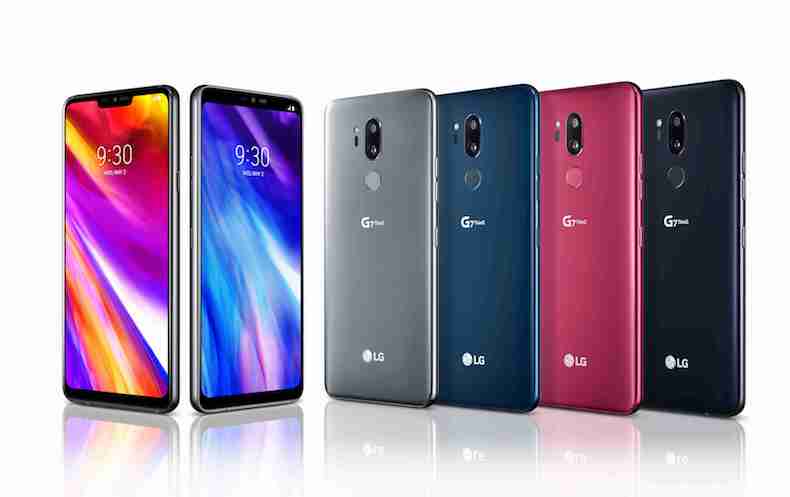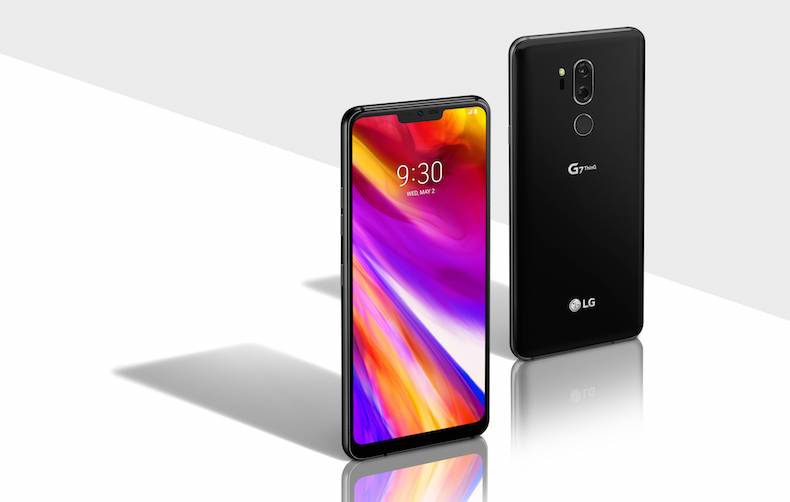LG unveils G7 ThinQ flagship smartphone with AI camera smarts
LG’s new top-of-the-line handset wants to be the world’s smartest smartphone… and it could just well be.

LG has drawn back the veil on the full specification for its new flagship phone, the G7 ThinQ, and you only have to notice the extended name to realise it’s the landmark model in the company’s long-spanning G smartphone series.
ThinQ (pronounced ‘think’) is the umbrella term for the company’s artificially intelligent products, which in its consumer electronics division spans TVs, smart speakers and smartphones.
MORE: LG G7 ThinQ hands-on review
The first smartphone to shelter under the ThinQ umbrella was the V30 ThinQ, a new version of the V30 updated with AI camera smarts and small hardware improvements. And now it’s been incorporated into LG’s ‘G’ series smartphones for the first time.
The G7 ThinQ also has AI camera features, but while in the V30 ThinQ they centred on improving photo capture – AI CAM analyses content the frame and recommends the optimal mode, while QLens can scan QR codes to enhance the online shopping experience – the G7 ThinQ focuses on expanding both the camera’s performance and practical abilities.

The G7 ThinQ is set to be one of the first LG devices with Google Lens, which aims to provide the user with information on what they’re shooting. For example, point the camera at a landmark and it should bring up overlaying text about it. Point it to a business card and it can save the data to your contacts.
‘Super Bright Camera’ processing also uses AI algorithms to improve shooting in low-lit conditions.
The latest hi-fi, home cinema and tech news, reviews, buying advice and deals, direct to your inbox.
At the camera’s roots is a 8MP front snapper and two 16MP rear lenses.
Live Photo mode records one second before and after the shutter is pressed for snippets of unexpected moments or expressions that would normally be missed.
The G7 ThinQ also brings ‘portrait’ mode to the G series, for shooting objects in the foreground against out-of-focus backgrounds.

Camera aside, the LG G7 ThinQ’s abilities look just as impressive. It’s powered by the latest Qualcomm Snapdragon 845 and, as expected, runs Android 8.0 Oreo. It has a 3000mAh battery and comes with 4GB RAM and 64GB of internal storage onboard, too. A G7 ThinQ+ variation on the handset takes that to 6GB of RAM and 128GB of internal storage.
The 6.1in screen has a QHD+ (3120 x 1440) resolution – slightly up from the LG G6’s 2880 x 1440 – and is supposedly capable of 1000 nits of brightness, which can be utilised when displaying HDR content.
That full spectrum can be achieved via a toggle on a slider, which boosts the display to its peak levels for 30 seconds. Without it, its brightness still is an impressive 850 nits.
LG continues its above-par audio commitment by including the Hi-FI Quad DAC we hailed in the G6.
LG claims the G7 ThinQ is the world’s first smartphone with DTS:X, which aims to deliver virtual 3D sound with headphones plugged into the phone’s – wait for it – 3.5mm headphone jack. The USB-C port is saved for charging.
For speaker listening, the G7 also has a new ‘Boombox’ design, which utilises the internal chamber of the phone to deliver ‘double the bass’ of ‘conventional’ smartphones.
The new flagship doesn’t only bring AI smarts to the G series but also a slightly revised aesthetic. The metal rim has been given a polish and, as with the iPhone X, there’s a notch at the top. The bottom bezel is apparently almost 50 per cent slimmer than on the LG G6.
On the side is a dedicated button for Google Assistant, too; a short press summons the voice assistant, while a long press activates Google Lens. The Gorilla Glass 5 on both the front and the back returns, as does the fingerprint scanner.
Pricing and availability details for the LG G7 ThinQ are yet to be confirmed.
MORE:
2018's flagship Android smartphones may step up their audio/video game
What is Android Auto? How it works, the apps, cars, features

Becky is a hi-fi, AV and technology journalist, formerly the Managing Editor at What Hi-Fi? and Editor of Australian Hi-Fi and Audio Esoterica magazines. With over twelve years of journalism experience in the hi-fi industry, she has reviewed all manner of audio gear, from budget amplifiers to high-end speakers, and particularly specialises in headphones and head-fi devices.
In her spare time, Becky can often be found running, watching Liverpool FC and horror movies, and hunting for gluten-free cake.
